What are the phases of the Moon?
There are eight lunar phases over 29 days, including the new Moon, waxing crescent, first quarter, waxing gibbous, full moon, waning gibbous, third quarter and waning crescent.
2024 Moon phases for the Northern Hemisphere
NASA produced rendering of the Moon's phases during 2024.
The same side of the Moon always faces Earth, but it looks different – even just a little bit every day – because sunlight reflects off the lunar surface, creating the different phases we see every month.
Eight lunar phases happen in order: new Moon, waxing crescent, first quarter, waxing gibbous, full moon, waning gibbous, third quarter and waning crescent.
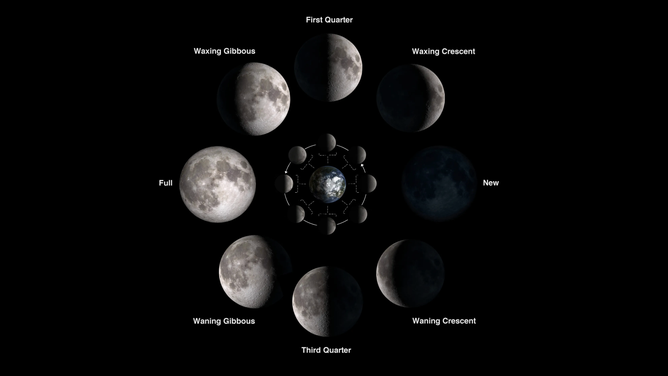
As the bright parts of the Moon appear to change shape during the month, each stage of the change is called a phase, and each phase carries its own name. (Image: NASA/Bill Dunford)
(NASA)
If you look up at the Moon and wonder, "What phase of the Moon is that?" NASA also has this daily guide, which shows the phase and what features of the Moon you can see each night.
Here's a look at all the lunar phases in more detail.
New Moon
A new Moon occurs when sunlight shines only on the Moon's far side, sometimes referred to as the dark side of the Moon because it is the side we can't see from Earth. During the new Moon, Earth's only natural satellite appears nearly wholly dark.
A new Moon is an excellent time to try and spot meteors or look at the stars, as moonlight can't wash out light from other astronomical objects.
Waxing crescent
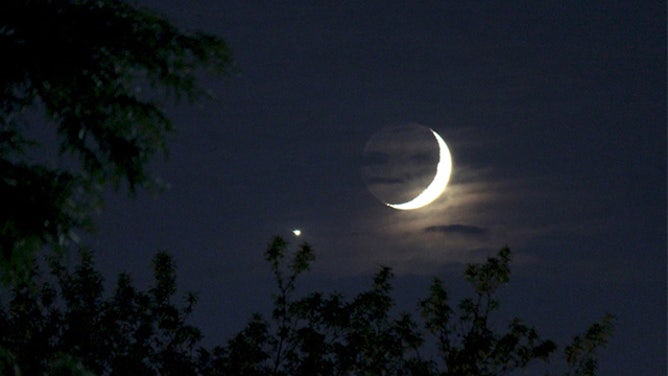
A waxing crescent moon setting in the early evening with bright Venus visible nearby. Credit: NASA/Bill Dunford
(NASA)
During the lunar phase known as the waxing crescent, just a thin curve of the Moon is visible. As the lunar orbit continues casting more sunlight on the Moon, the crescent grows with sunlight on about 40% of the Moon. According to NASA, this phase is best viewed in the evening when the sky becomes darker.
First quarter
During the first quarter, the Moon is a fourth of the way through its monthly phases. About half of the Moon is illuminated by the Sun to viewers on Earth. It's best to view a first quarter Moon when it's high in the sky during the evening.

A view of the first quarter moon (Illumination: 46%), also referred to as the half-moon, is seen in Lecce, Italy, on July 13, 2024. (Photo by Manuel Romano/NurPhoto via Getty Images)
(Getty Images)
Waxing gibbous

A waxing gibbous moon rises as a Delta Connection Embraer E175LR aircraft approaches Los Angeles International Airport from Sacramento on June 15, 2024 in Thousand Oaks, California. (Photo by Kevin Carter/Getty Images)
(Getty Images)
About 90% of the Moon's Earth-facing side is in view during the waxing gibbous phase. The Moon appears brighter in the sky. You can see the waxing Gibbous Moon phase when the sky is dark.
Full Moon
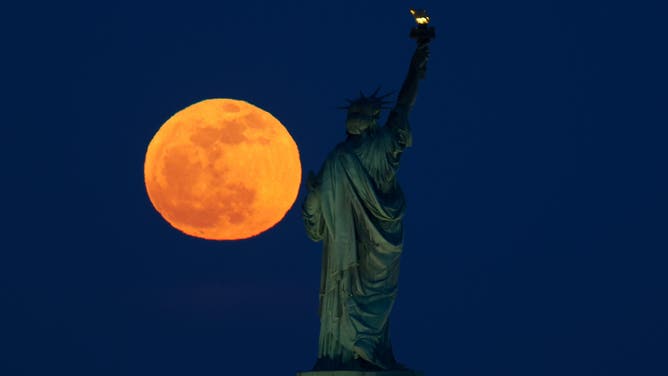
The full Pink Moon rises behind the Statue of Liberty in New York City on April 23, 2024, as seen from Jersey City, New Jersey. (Photo by Gary Hershorn/Getty Images)
(Getty Images)
The bell of the monthly lunar ball happens when the Moon is opposite the Sun during its orbit around the Earth, fully illuminating the nearside of the Moon. This is the most well-known phase, possibly because many cultures name full Moons after seasonal changes that coincide with them.
If the Moon appears bigger and brighter than other full Moons, it could be a Supermoon, which happens when the satellite is at its closest point in orbit to Earth during the full Moon phase.
Waning gibbous
We've reached the other side of the lunar phases, as less light is cast onto the Moon. Still, the Moon appears between 90 and 60% full during the waning gibbous phase. As the Moon continues its orbit, with less sunlight, the Moon rises later each night.
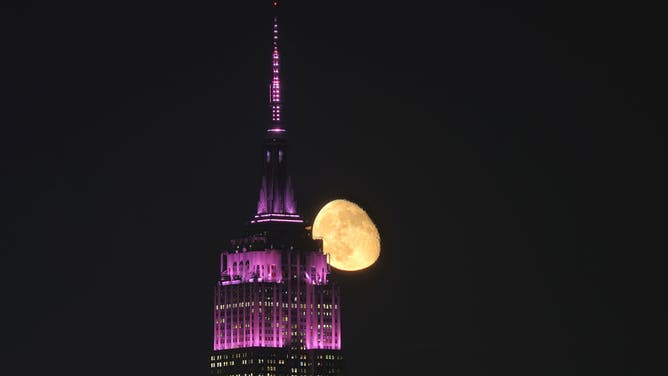
An 83 percent illuminated waning gibbous moon rises behind the Empire State Building lit in pink to mark Breast Cancer Awareness Month in New York City on October 2, 2023, as seen from Hoboken, New Jersey. (Photo by Gary Hershorn/Getty Images)
(Getty Images)
Third quarter
Also known as a last-quarter Moon, a third-quarter Moon looks half-illuminated. Since we see only one side or half of the lunar surface, you see only a quarter of the Moon.
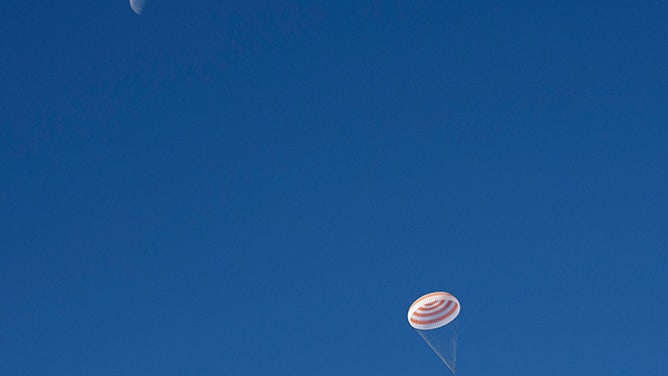
A third quarter moon is seen above the Soyuz MS-11 spacecraft as it lands in Kazakhstan with Expedition 59 crew members in 2019. Anne McClain, David Saint-Jacques, and Oleg Kononenko returned after 204 days onboard the International Space Station. Credit: NASA/Bill Ingalls
(NASA)
If you look up and see the Moon in the late morning, it could be a third-quarter Moon, which rises around midnight and sets around noon.
Waning crescent
The final phase before the cycle starts again with a new Moon is called waning crescent. Just a sliver of the Moon is not in shadow at this point.
